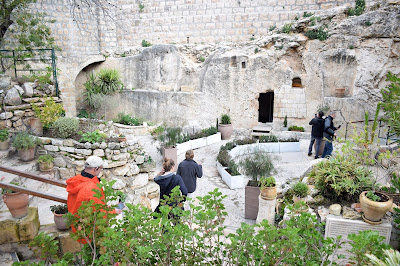Whatever word you use, remember the real reason of the season
By Mike Haynes
For much of
my life, I heard people say, “Happy Holidays,” without thinking anything about
it. It usually meant for you to have a nice holiday season, which included
Thanksgiving if said by the fourth Thursday of November and otherwise referred
to Christmas, New Year’s and for those familiar with it, Hanukkah.
Then some
people started getting worried that saying, “Merry Christmas,” might offend
those who aren’t Christians or might hurt business, so the singular “holiday”
started replacing “Christmas” – mostly in retail settings and in public
schools.
I’ll admit,
it bugs me when I hear “holiday” as a direct substitute for “Christmas” as in
“holiday gifts” or “holiday sale.” I’ve even heard about a “holiday tree.”
I respect
other religions and other holidays that I don’t observe, but it is illogical
and possibly disrespectful to avoid using “Christ” to refer to the birthday of
Jesus Christ. (Yes, I know he probably wasn’t born on Dec. 25, but we don’t
know when it happened, so it’s as good a date as any to observe the momentous
occasion.)
Here is my
attempt to make “holiday” mean something for those of us who don’t want this
miraculous day to lose its significance:
The word could stand for:
H – Holy. Nothing
is holier than the God of the universe coming to Earth to fulfill his purpose
of saving his people from their sins.
O – “O
Little Town of Bethlehem.” Whether historically accurate or not, we picture a
baby in a manger surrounded by animals and a loving mother and father in a barn
or cave with the light of a bright star illuminating them. That scene gives us
peace.
L – Love.
John 3:16 says it all: “For God so loved the world, that he gave his only begotten
Son, that whosoever believeth in him should not perish, but have everlasting
life.”
I – Israel.
Christianity wouldn’t have been born without God’s chosen people. Jesus came
from the line of the great Jewish king, David.
D – Divine.
Christians believe the man who was born 2,000 years ago, ministered to those
around him, performed miracles, was executed and rose from the dead was both
human and divine. He claimed to be God. He was – and is.
A – Angel –
Luke 2:10-11: “And the angel said unto them, ‘Fear not: for, behold, I bring
you good tidings of great joy, which shall be to all people. For unto you is
born this day in the city of David a Savior, which is Christ the Lord.’”
Y – You.
And me. And everybody. That’s who this savior came to serve and to save. Whatever
word is used for this Dec. 25 observance, let’s remember that not only did
Jesus transform the world, but God blesses us, every one.


















